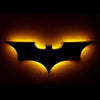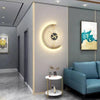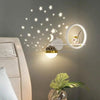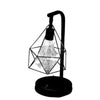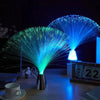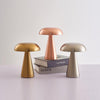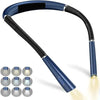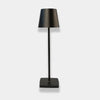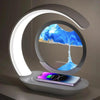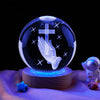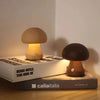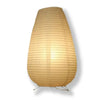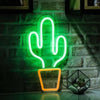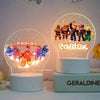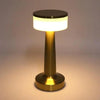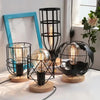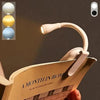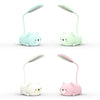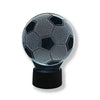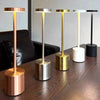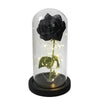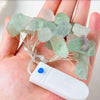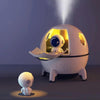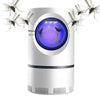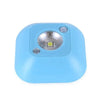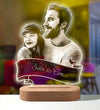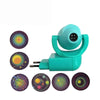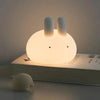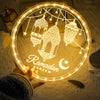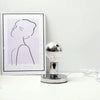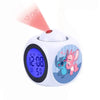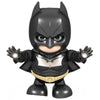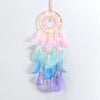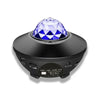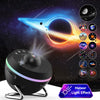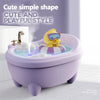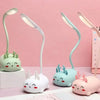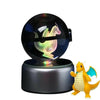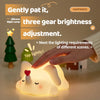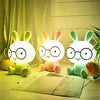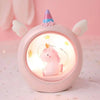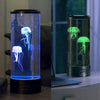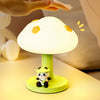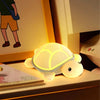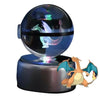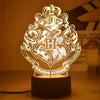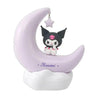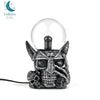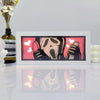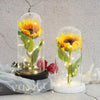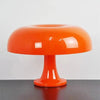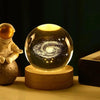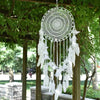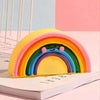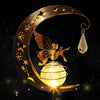
A solution for sleep?
Worried that your baby or toddler might be afraid of the dark ? Many parents believe that introducing a night light will help ease their child's anxiety and reduce or eliminate waking up during the night . Although there are situations where introducing a child's bedroom lamp may be a good choice, light has a direct biological effect on your child's circadian rhythm . Putting a light in your child's sleep environment could backfire and make sleep problems worse. This blog will help you decide if introducing a night light to your child's bedroom is right for you.
Science

Light is a signal for the brain to wake up
There are two sleep impulses, the homeostatic impulse (aka sleep pressure) and the circadian rhythm . The circadian rhythm is your internal clock. Everyone's circadian rhythm is a little longer or shorter than 24 hours. To stay aligned with the 24-hour day and maintain sleep at night and wakefulness during the day, our body's circadian rhythms use the light we see to reset our internal clock each day. A simple way to look at it is that our bodies are always looking for light to signal wakefulness during the day. When your body is exposed to light at night, it can interpret that light as a daytime signal and begin to promote wakefulness at night.
Although the light emitted by a night light is much dimmer than that of the sun, recent studies have demonstrated that young children are much more sensitive to low levels of light exposure compared to adults. In fact, one study found that light levels as low as 5 lux (the equivalent of five candles burning a foot away) were enough to affect the circadian system. Additionally, the wavelength, timing, and duration of light exposure are all important. Blue light has a stronger impact on the circadian rhythm and typical white night lights often contain a lot of blue light. Light has a stronger impact when preceded by darkness, meaning that when your child is sleeping and then wakes up, light will have a greater impact. Finally, most studies show that the longer you are exposed to light, the greater the effect of light. All of this means you shouldn't introduce a night light unless you need it to move safely around the room or unless you're sure your child is afraid of the dark.
Fear of the dark is little studied and complicated
Some children are actually afraid of the dark . There isn't enough research on how fear of the dark develops in babies and toddlers, but studies have suggested that it results from learning (i.e. hearing that darkness causes fear from peers or adults), the inability to see in very dim light, or innate survival mechanisms. It is important to avoid implanting a fear of the dark in your child's mind. For example, don't say "are you afraid of the dark?", as this statement might trigger worry about the dark . If you suspect your child has nighttime vision impairment, it may be helpful to have your child evaluated by an ophthalmologist . The small amount of research that exists suggests that introducing a light into the sleep environment may be helpful for some children, but has also shown that light can also cast shadows that can lead to further anxieties . Ultimately, adding a night light to your child's room probably isn't a quick fix even if your child is afraid of the dark.
How do you know if your child is really afraid of the dark?
It can be difficult to determine if a child is truly afraid of the dark . Sometimes a toddler will use the word 'fear' because parents will often react to this word differently than other words. In other words, your child may have learned that the word "fear" gets your attention, without actually understanding what that means. It's also possible that your child knows the meaning of the word "fear" but also knows that you react to it differently than other words. The key is to listen to your child's affect to determine if the words your child uses reflect emotion . If your child is visibly distressed , then a fear of the dark may be to blame; However, if your child will sleep fine in a dark room but is distressed after waking up at night , then the problem may actually be nightmares or night terrors . On the other hand, if your child wakes up and says "fear" without any emotion, it could mean that your child has learned to use that word to get your attention.
If you think your child is really afraid of the dark , consider helping them cope by spending time together in the dark . For example, give your child plenty of time to go dark with you nearby. You could turn off the lights and tell your child a story, listen to music together, or read a book with a flashlight to make the darkness less stressful. If your child's distress is intense, you may want to discuss your concerns with your pediatrician who can help you determine whether a referral to a psychologist would be appropriate.
When to use a night light?
Consider using a night light only if:
- You need to see into your child's room to care for them without tripping during nighttime feedings and diaper changes.
- Your child has a real fear of the dark that cannot be alleviated by other means
What type of night light to choose?
If you think a night light would help your child (or if you need one for safety reasons), make sure it has the following features:
- Low light intensity . Choose the weakest option possible. A bright night light will have a stronger impact on your child's circadian rhythm and will also cast stronger shadows around your child's room. Your child's eyes will adjust to a dim night light, so a bright night light isn't really helpful.
- Red . Red may not seem like an obvious choice for a night light, but red light has the smallest effect on circadian rhythm (although it still has an effect!). Avoid blue, green or white night lights as they will have a stronger impact on your child's circadian rhythm.
- Remote. Place the night light as far away from your child's bed as possible.
But wait ! My child already has a bright night light and I think this could be a problem!
It's not a good idea to remove a night light if your child is used to having one on all night. Having a night light on all night in your child's sleep environment and then turning it off could trigger a fear of the dark . If your child currently has a night light that does not meet these criteria, consider replacing it with one that is dim, red, and distant as noted above. If you are concerned that your toddler might react negatively to installing a new night light, let your child choose a new night light. Choose 2-3 options that your child might like (e.g., a red car, a red star, their favorite red cartoon character, etc.) that meet the criteria and replace the old night light with the new one.

Problems are usually more complicated than a simple change in sleep environment
While it is important to ensure that your child feels safe and comfortable sleeping, changes in your child's sleep environment alone are unlikely to produce significant changes. If you need additional help, nap and sleep regressions. If you have a baby between 6 and 15 months.

